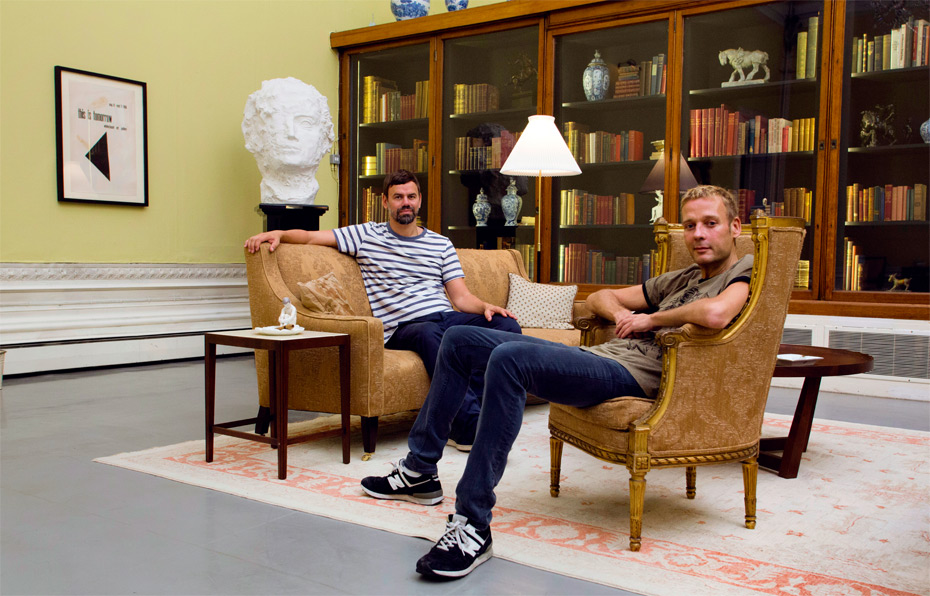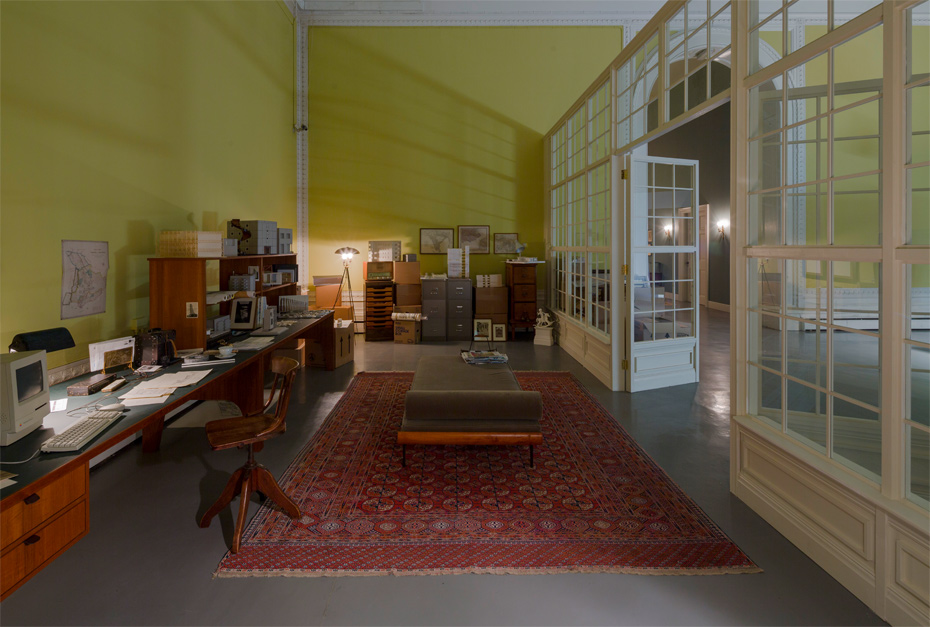As the caravans of Frieze’s travelling art circus put down their stakes in Regent’s Park, Port’s William Kherbek speaks to a number of artists, gallerists and curators about art, creation, business, life, and deliquescing boundaries

First in the queue are the Danish-Norwegian artists Elmgreen and Dragset, the creators of the fourth plinth sculpture ‘Powerless Structures’, the conceptual adventure that was Prada Marfa (a Prada boutique in Donald Judd’s special patch of the Texas desert), and their current show, an installation entitled Tomorrow showing at The Victoria and Albert Museum until 2 January.
William Kherbek: You’ve spoken in the past of your interest in challenging whatever received or historic rule structures societies seem to inherit, is it possible that in your collaborative effort you’re working to challenge the concept of the “artist” as a figure as a social role?
Elmgreen and Dragset: That’s actually right. The traditional position of the artist – as a single ego, and the notion of the artist as some sort of genius in a romantic sense – is already disrupted just by being an artist duo. Our working method is based on our collaboration and our works are the results of our ongoing dialogue.
William: As your work has often engaged theatre as a form, I wonder if you often take into account the notion of how your work both creates characters and is created by a “character” of sorts – your collaborative practice. Do you take the psychology of the characters in your pieces quite seriously, or do you like to keep it more “open”?
Elmgreen and Dragset: Maybe due to the fact of being two artists working together, we like to invent these third personae. The characters that we shape our narratives around are like characters in a theatre play or in a film and we take them as seriously as a filmmaker would do. Through the character we can say something very specific and personal but at the same time something that might have a broader and more general interest.
William: How did you arriveat the character for your show Tomorrow at the V and A?
Elmgreen and Dragset: Norman Swann, our character, in Tomorrow is an elderly, now retired architect. Not a successful one but an intelligent and privileged daydreamer. We wanted to describe the complex mindset of a person who had strong opinions and a lot of visions throughout his life but who never managed to realise his great ideas.

Cont’d: Failure is not something that is treated very often as a topic in our contemporary culture. Everything seems so focused on success criteria. Just look at how people profile their own lives on Facebook. However, that is not really how life is, is it?
William: Having taken on a number of commissions for public art projects, one of the questions that arises is how you regard scale as an element of your practice. Though you’ve done works which are quite small, do you feel the large scale is a natural fit for your sensibility, both in terms of physically large objects or events involving lots of actors and performers?
Elmgreen and Dragset: No, scale only depends on the viewing situation. It is a matter of practical physical conditions. In Trafalgar Square you need to adjust the size of your work in relation to the surroundings otherwise the work would simply disappear not only because of the grandness of the square but also because of all the visual noise which you experience on that very central square. However, sometimes you can create the strongest message by downscaling your work as we did at Tate Modern in 2004 when we showed only a tiny animatronic sparrow in the window of the big exhibition space.
William Kherbek: Given that you’ve had two fairly high profile projects involving the American state of Texas, Prada Marfa and an abortive bridge project in the city of Houston, do you feel any kind of aesthetic connection with Texas, despite its being so culturally distinct from Scandinavia and, by reputation at least, not one of the most gay-friendly American states?
Elmgreen and Dragset: At first we actually planned to place the isolated Prada store in the dessert of Nevada, and it would have been Prada Nevada instead, ha ha. But it made sense to locate the work close to Judd foundation in Marfa since the shop also speaks about the transformation in the use of Minimalism with its mint green box shaped shelving which is typical for the Prada interior design. We have no special relation to Texas as such. It always comes down to who you meet wherever you go. Our world map is kind of based on personal relationships rather than borders and general politics.
William: Your Venice Biennale work touched on this concept a bit, but I wonder if you feel that there are aspects of a particular conception of a “gay sensibility” that is increasingly being fetishised or turned into a commodity by the art market. Do you feel like this construction of a knowable kind of “gay art” is limiting in any way for young gay artists?
Elmgreen and Dragset: The portraying of contemporary gay life is still a simplified one. Full of clichés and old stereotypical leftovers. Even in gay media itself. Just because you are homosexual you are certainly not part of a homogenous group. The gay identity of today is very diverse. We have nothing in common with conservative gay politicians like the former German foreign minister, i.e. values, morals, world views, among gays are as different as they appear in the rest of the population.
Elmgreen and Dragset: Tomorrow runs until 2 January at The Victoria and Albert Museum, Cromwell Road London SW7 2RL




